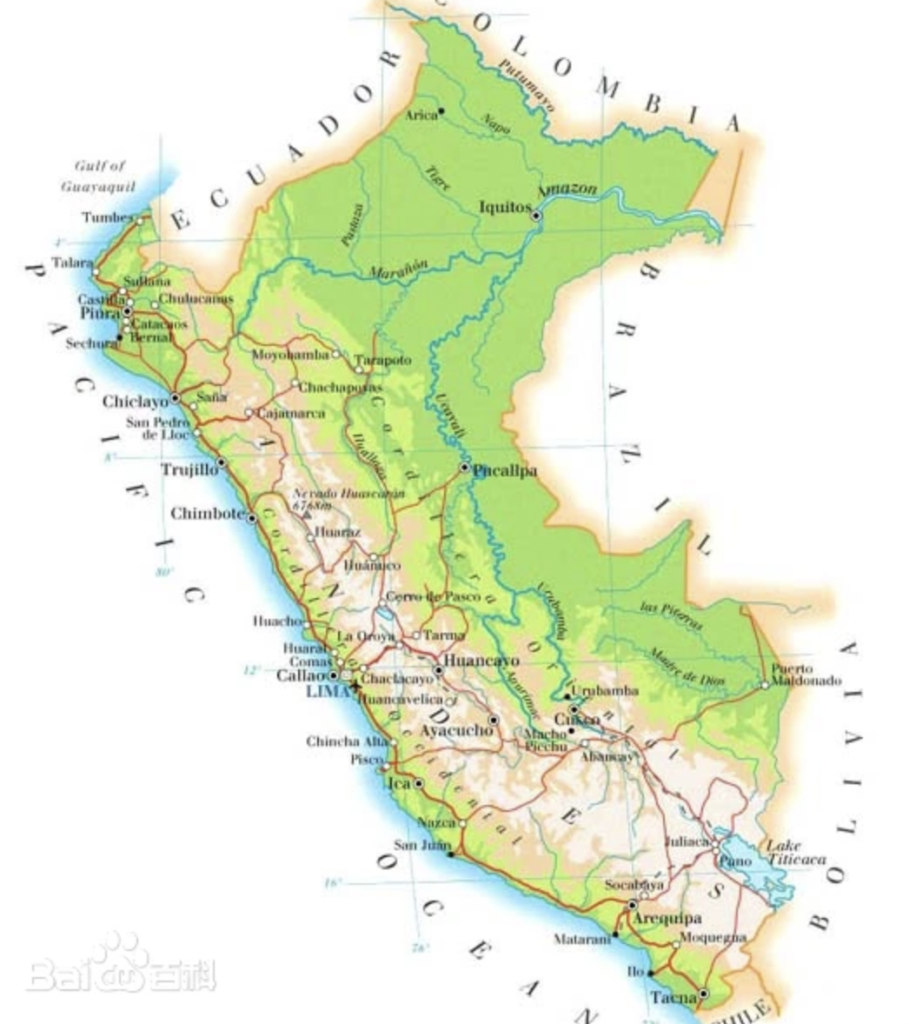Peru is located in the middle of the west coast of South America, bordered by Ecuador and Colombia to the north, Brazil and Bolivia to the east, Chile to the south, and the Pacific Ocean to the west. Peru has a coastline of 2,254 kilometers and a land area of 1,285,000 square kilometers, ranking fourth in Latin America.
The Andes Mountains run through the north and south of the country, with arid plains in the western coastal areas and Amazon rainforests in the east, and mountains account for 1/3 of the country’s area. Peru is divided into three regions: the western coastal tropical desert area, with a dry and mild climate, with intermittent distribution of plains, the central mountainous plateau area, with an average altitude of about 4,300 meters, is the source of the Amazon River, and the eastern part is the Amazon rainforest area, which belongs to the upper basin of the Amazon River, with high temperature and rain all year round, full of forests, vast and sparsely populated, and is a newly developed oil production area in Peru.
At 6,768 meters above sea level, Mount Vascarán is the highest point in Peru. The main rivers are the Ucayali and Putumayo rivers. To the southeast, on the border with Bolivia lies Lake Titicaca, the second largest lake in South America.
Peru is located in the tropics, and its geographical conditions are complex and diverse, so its climate is not a single tropical climate, but has a high degree of diversity. The western coastal region has a mild climate, high humidity and low precipitation. The northern part of the country has a relatively high temperature and more precipitation; the central part is located on a plateau and has a rainy summer with the increase of altitude and the temperature and humidity drop with the increase of altitude, which has the characteristics of “ten miles of different days”; the eastern part is hot and rainy, and the southern part is cold in winter. The average annual temperature of the capital Lima is 18.7°C, and it rains little all year round, making it known as the “city without rain in the world”. In recent years, due to climate change, precipitation in Lima has gradually increased.
